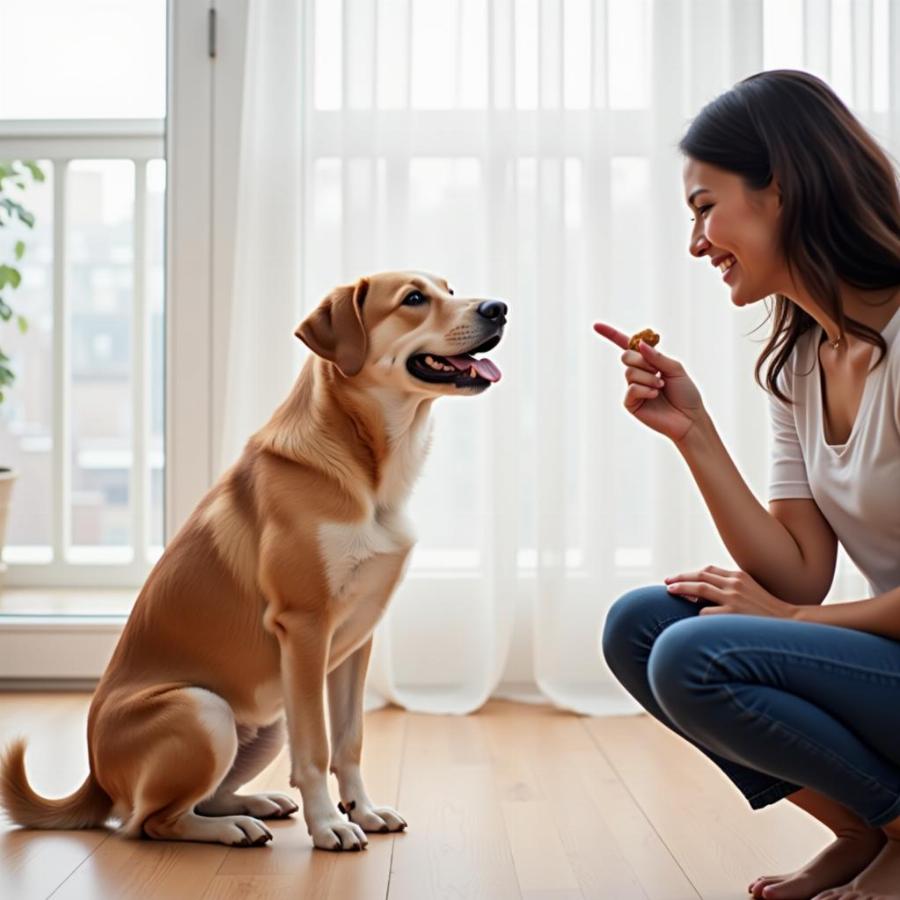A dog sleeping soundly, oblivious to the world around them, suddenly perks up at the faintest crinkle of a treat bag. This scenario is a familiar one to many dog owners. Why do our furry friends seem to possess a superhuman ability to detect the presence of treats, even when seemingly dead asleep? This article will delve into the science behind this phenomenon, exploring the fascinating world of canine senses and how they contribute to this “treat telepathy.” We’ll also discuss the implications of this for training and managing your dog’s diet.
The Science Behind Treat Detection
Dogs have an extraordinary sense of smell, far superior to our own. Their noses contain up to 300 million olfactory receptors, compared to a mere 6 million in humans. This allows them to detect even the tiniest traces of scent molecules, including those emanating from their favorite treats. Even when asleep, a dog’s olfactory system remains active, constantly processing information from the surrounding environment. The slightest whiff of a familiar treat scent can trigger a neural response, rousing them from their slumber.
Furthermore, dogs are incredibly attuned to sounds associated with treats. The rustling of a bag, the opening of a container, or even the specific tone of voice we use when offering a treat can all become conditioned stimuli, triggering an anticipatory response. This learned association between sound and reward further enhances their ability to detect treats, even in a state of deep sleep.
Why Do Dogs Love Treats So Much?
Beyond the obvious pleasure of taste, treats fulfill several important functions in a dog’s life. They serve as powerful motivators in training, reinforcing desired behaviors. They also provide a source of comfort and security, strengthening the bond between dog and owner. Finally, treats can offer essential nutrients and mental stimulation, especially when chosen carefully.
Using Treats Effectively in Training
Understanding your dog’s sensitivity to treats can be instrumental in effective training. Using high-value treats, those your dog finds particularly appealing, can significantly increase motivation and focus during training sessions. However, it’s important to use treats judiciously to avoid overfeeding and maintain a healthy weight.
 Huấn luyện chó bằng kẹo
Huấn luyện chó bằng kẹo
Managing Your Dog’s Diet While Still Using Treats
While treats are a valuable tool, they shouldn’t make up a significant portion of your dog’s daily caloric intake. Opt for smaller, lower-calorie treats, or break larger treats into smaller pieces. Consider incorporating healthy alternatives like small pieces of fruits or vegetables that your dog enjoys. Always consult your veterinarian for personalized dietary advice based on your dog’s breed, age, and activity level.
How to Choose the Right Treats for Your Dog
Selecting the right treats is crucial for both your dog’s health and training success. Look for treats made with high-quality ingredients and avoid those with artificial colors, flavors, and preservatives. Consider your dog’s age, size, and any dietary restrictions when making your selection.
Conclusion
The phenomenon of a dog sleeping through everything but the sound of a treat highlights their remarkable sensory abilities and their innate love for rewards. Understanding this can help us better train, manage their diet, and strengthen our bond with our canine companions. By choosing the right treats and using them effectively, we can ensure our dogs stay healthy, happy, and motivated.
FAQ
-
Why does my dog wake up at the slightest sound of a treat bag? Their highly developed sense of smell and learned associations with treat-related sounds contribute to this.
-
Is it bad to give my dog treats while they’re sleeping? It’s generally not harmful, but it can disrupt their sleep cycle.
-
How many treats can I give my dog per day? Treats should not exceed 10% of their daily caloric intake.
-
What are some healthy treat alternatives? Small pieces of fruits and vegetables like carrots, apples, or blueberries can be healthy options.
-
How can I use treats effectively in training? Use high-value treats and pair them with positive reinforcement.
-
What should I look for when choosing dog treats? Choose treats made with high-quality ingredients and avoid artificial additives.
-
Can treats be used for purposes other than training? Yes, they can be used for bonding, mental stimulation, and providing essential nutrients.